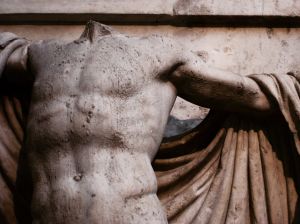More To Abs Than Sit-Ups
When I think about the social traumas of childhood, I often reflect on one
particular test, perhaps archaic, now called “The President’s Physical Fitness Test.”
I can’t imagine this was based on a mandate issued down from the oval office, but none-the less, my Phys. Ed. teacher, “Mr. Ashcomb” took it pretty seriously. Along with his flat top military haircut, perfectly pressed gray slacks with a blue stripe down the side, massive hairy forearms , and a physique that looked like he was doubling as “GI Joe”, this test was all business.
I smile when I think about him holding a stopwatch as we took a position on our backs, best buddy holding our ankles, and proceeded to sit up and then slam back down onto the hardwood gym floor performing as many repetitions as we could in one minute .
To this day I still hear the sounds of the “sitter-uppers” knocking the wind out of themselves as they slammed to the floor.
In hindsight, even Mr. Aschcomb didn’t know what the exercise community knows now – that abdominal strength doesn’t require the right angle sit-up to be effective or strength and sculpt the mid-section.
Try this – pull your belly button towards your spine while maintaining your normal breath sounds and rhythm. Congratulations, you have just unlocked the first mystery of abdominal development which begins with tensing the muscle before you begin to shorten it further through an abdominal exercise.
This one aspect of muscle control alone, will create support to the spine and connective tissues when the body is put under any kind of physical stress. Most fitness buffs have learned that strong abdominal control is important for all exercises and not reserved for abdominal exercises only.
Gaining deliberate or voluntary control of the abdominal muscles also help transfer force through the ground and into the upper body when running, coming from a sit to stand, or lifting any heavy object above the head.
Much like a truck that can tip easily if it is too top-heavy, the demands of the abdominal muscles to stabilize the spine increase the farther objects are lifted from the ground, or move toward or above head level.
The abdominal muscles are certainly not exempt from common misunderstandings about their function – the more common regarding spot reduction. Countless situps will not decrease the amount of fatty tissue around the waist line. They will however, create a positive tension that will pull abdominal fat closer towards the spine, often giving an illusion of less body fat.
The abdominal architecture is also comprised of only one set of muscles divided into sub-groupings or pods of muscle by fibrous bands. These bands are what ultimately divide the famous “six pack” or purported “eight pack” appearance.
Generally speaking, when the feet and knees are moved towards the chest, the lower abdominal fibers (which are situated length-wise) contract first to facilitate this plane of movement. Conversely, when the head and chest are moved towards the knees, the upper or higher abdominal fibers (also situated length-wise) contract first.
Ultimately, my clients often ask me what is “the best” exercise for the abdominal muscles. While there is no easy answer, I usually base my answers on minimal props. A study done at San Diego State University measured the amount of muscle involved in vari0us abdominal movements and determined that the bicycle sit-up, which is comprised of moving alternating elbows towards alternating knees while laying on the back in a cycling motion, utilized the most stomach muscle.
After all has been said and done, the cosmetic appearance of nice abdominal muscles comes down to the amount of body fat one has, and the quality of the movements to develop them. Instead of focusing on hundreds of explosive crunches every day, it’s best to perform4-5 sets, 30 seconds each of the slowest most controlled crunches possible.
At days-end the fitness enthusiast should evaluate their abdominal development based on the frequency in which they intentionally brace the midsection before performing any resistance or running movements – especially those from the feet where the spine is the most vulnerable.

